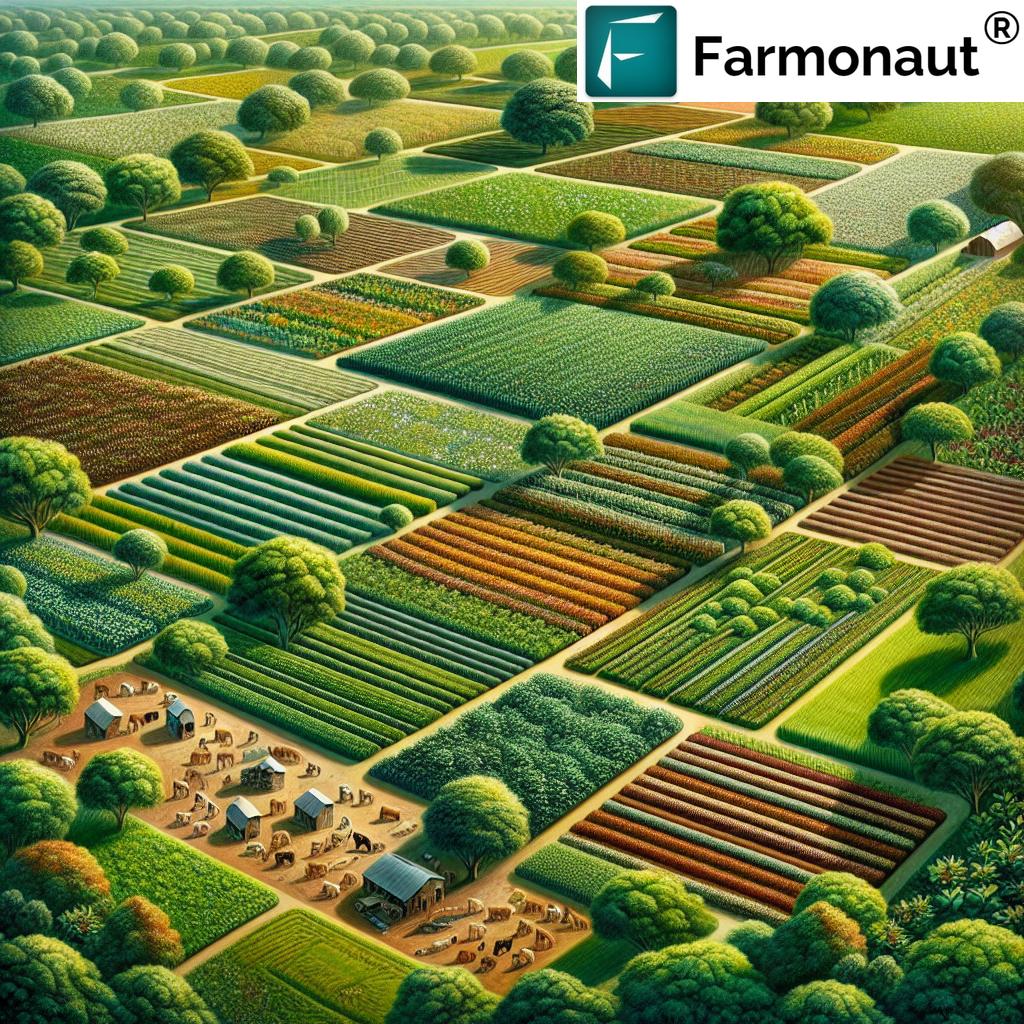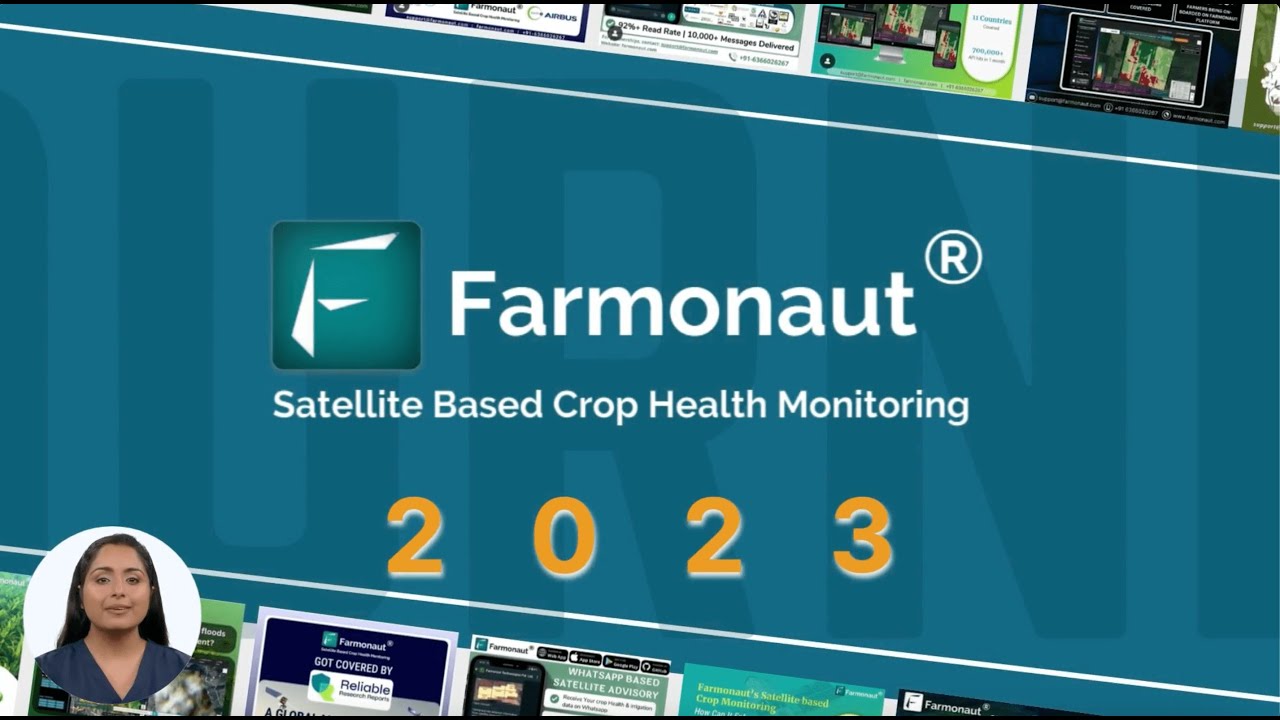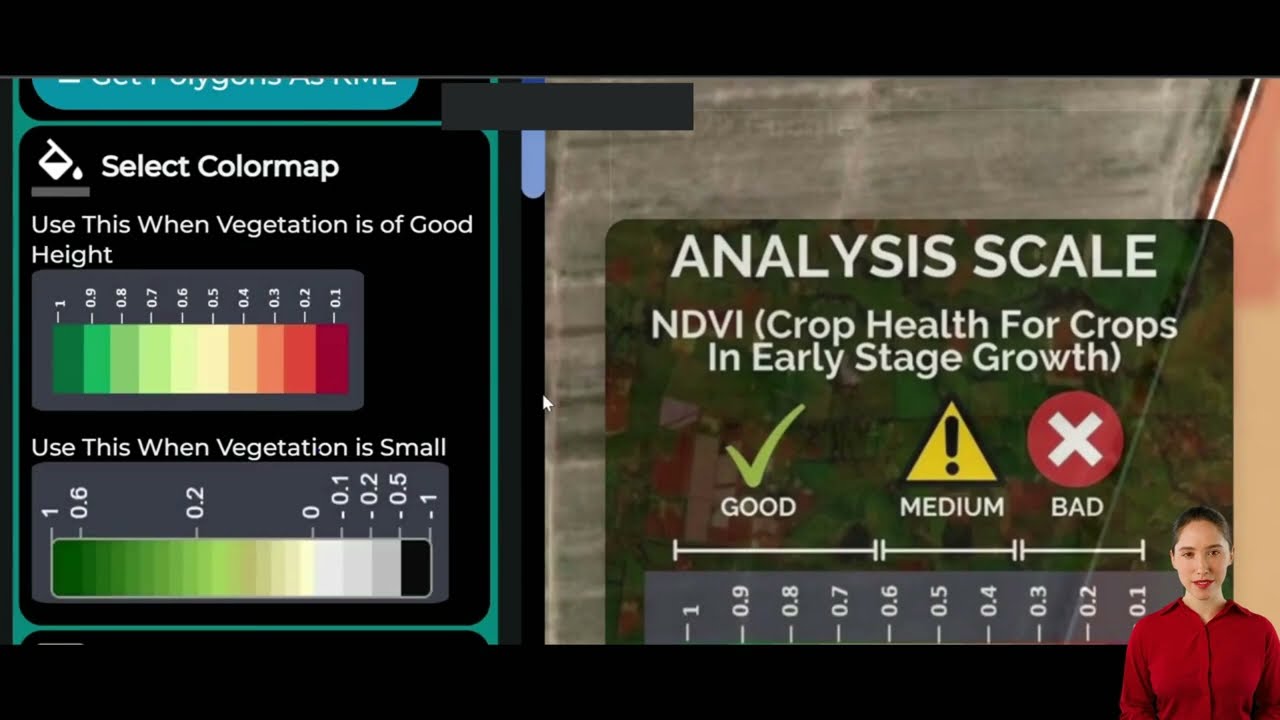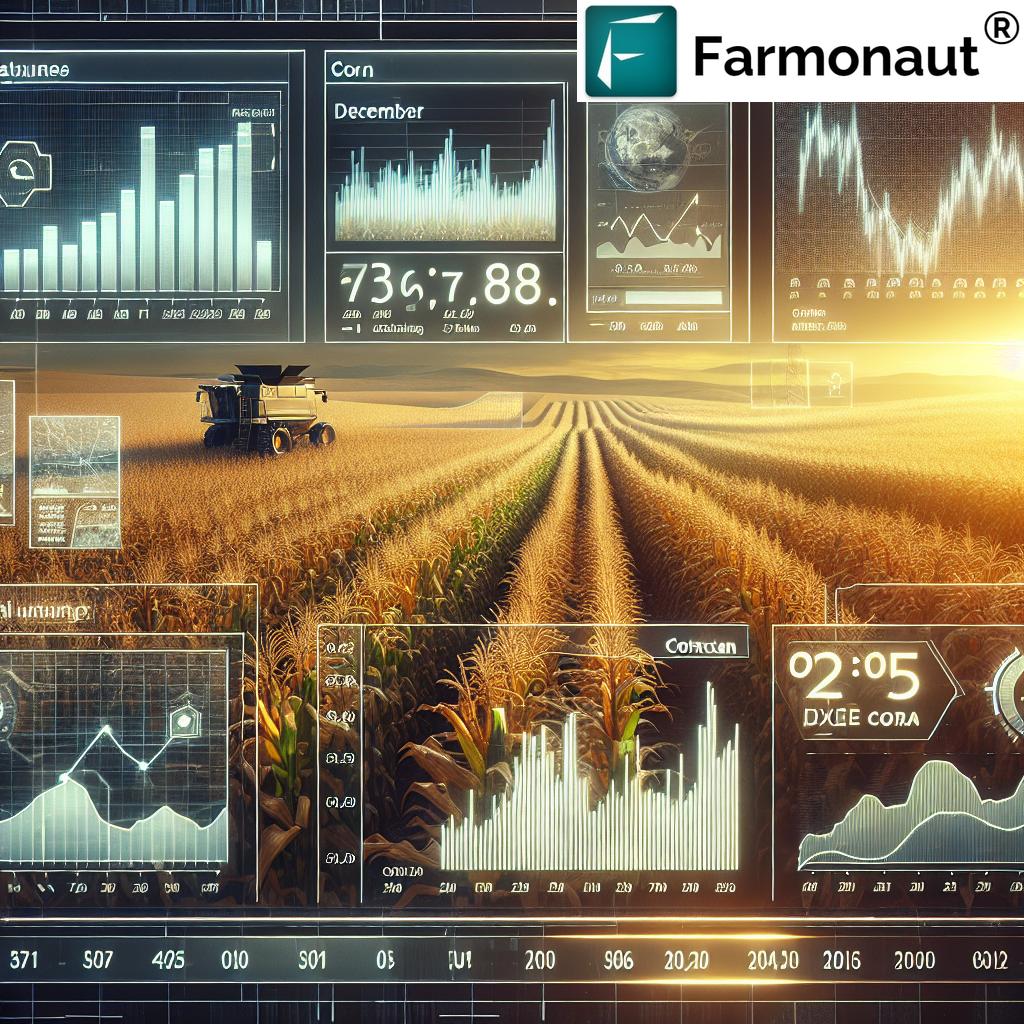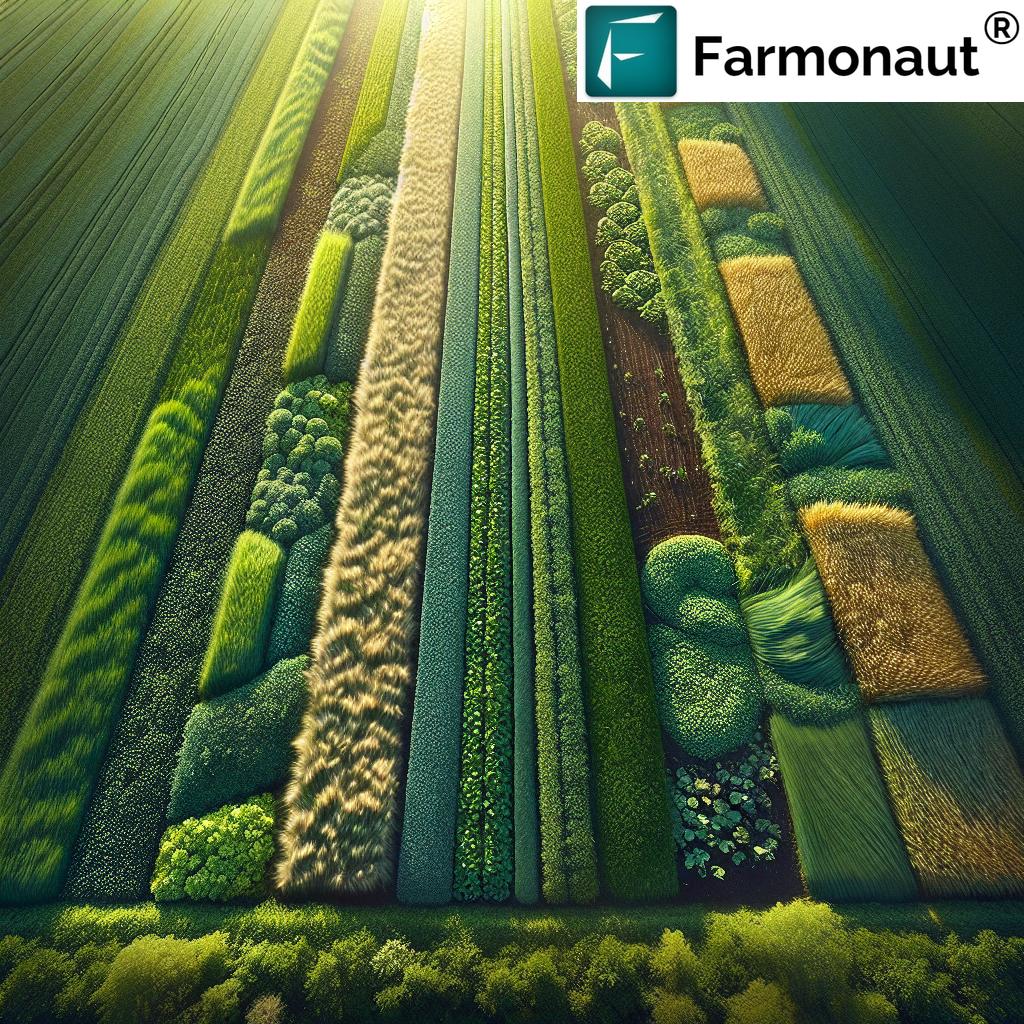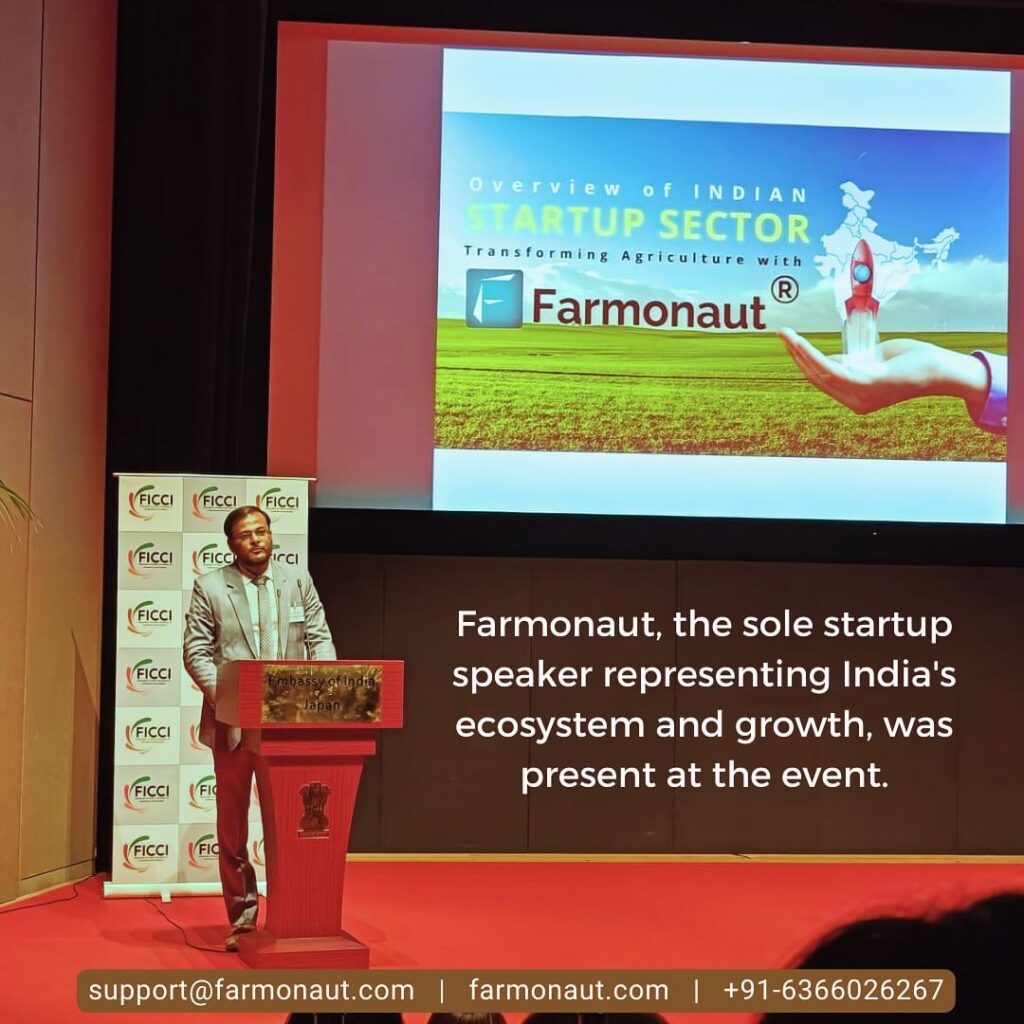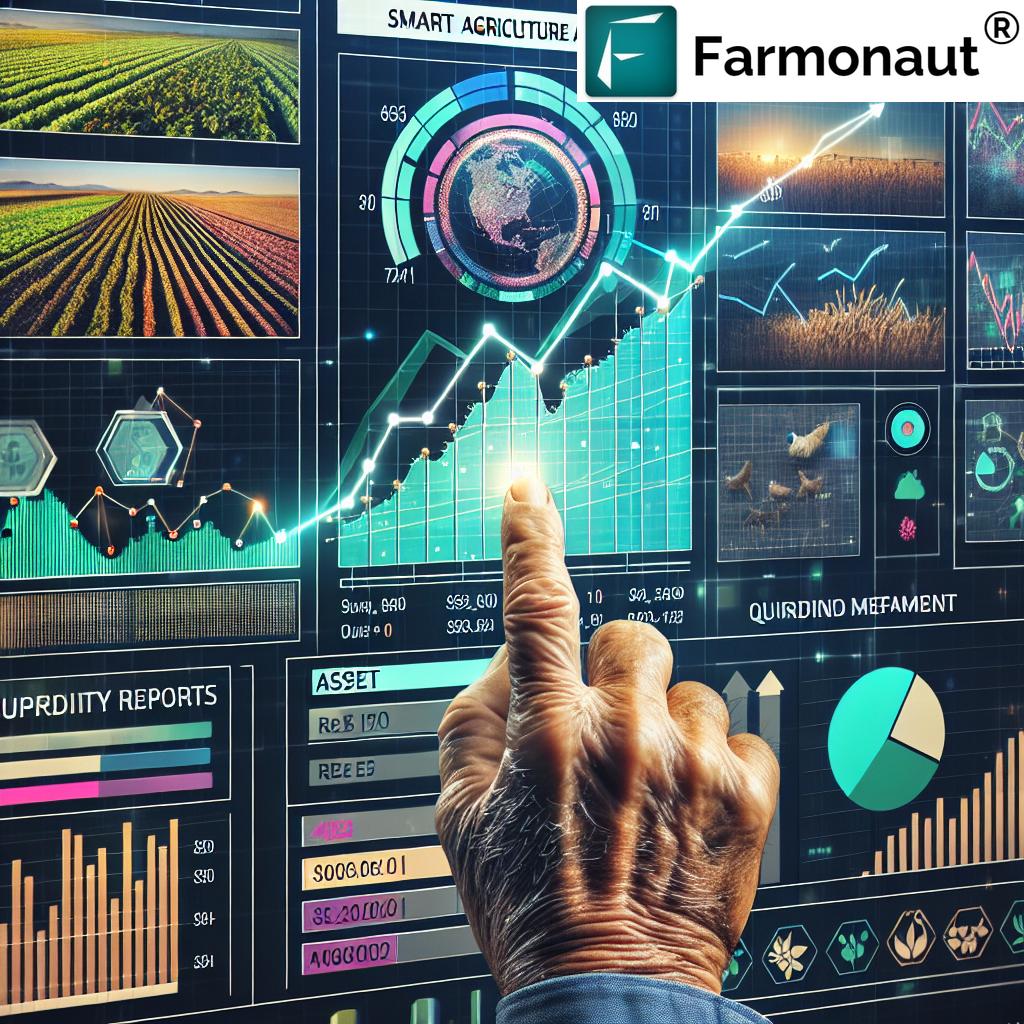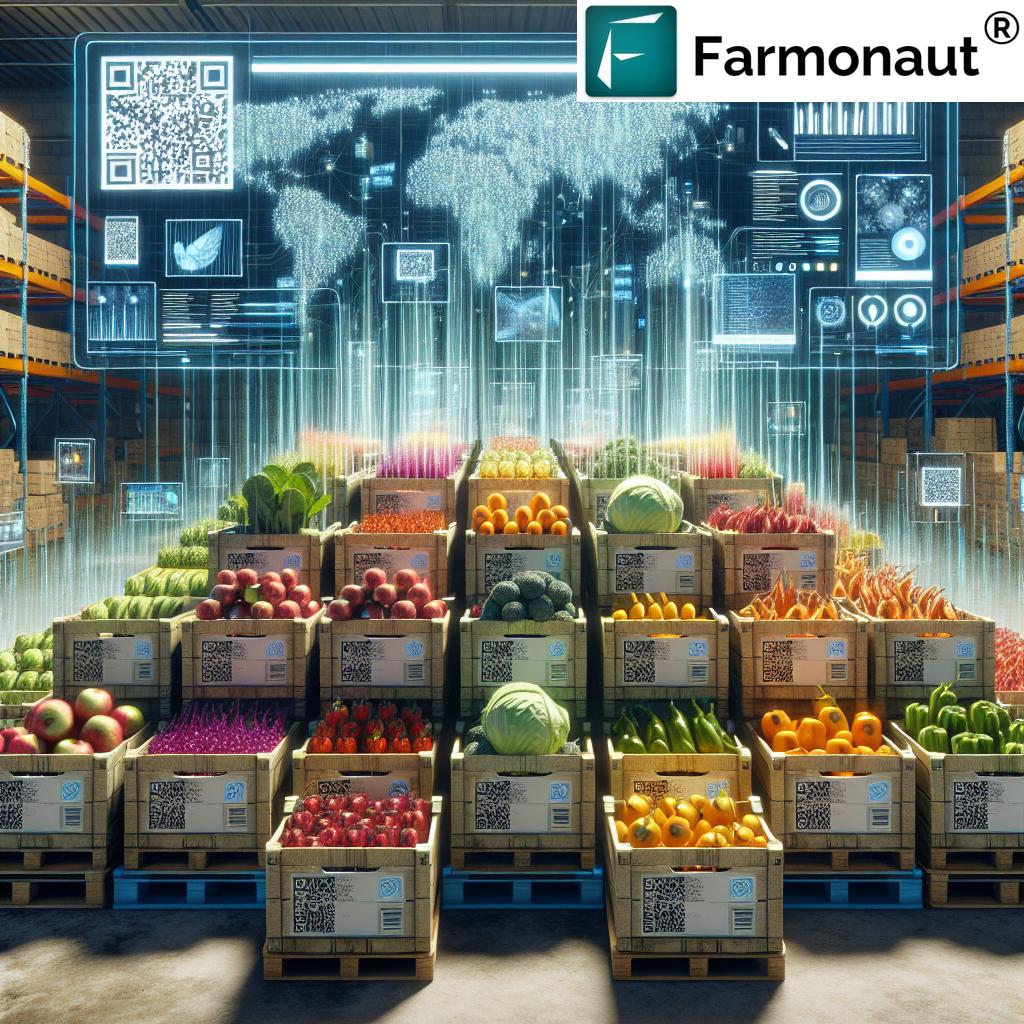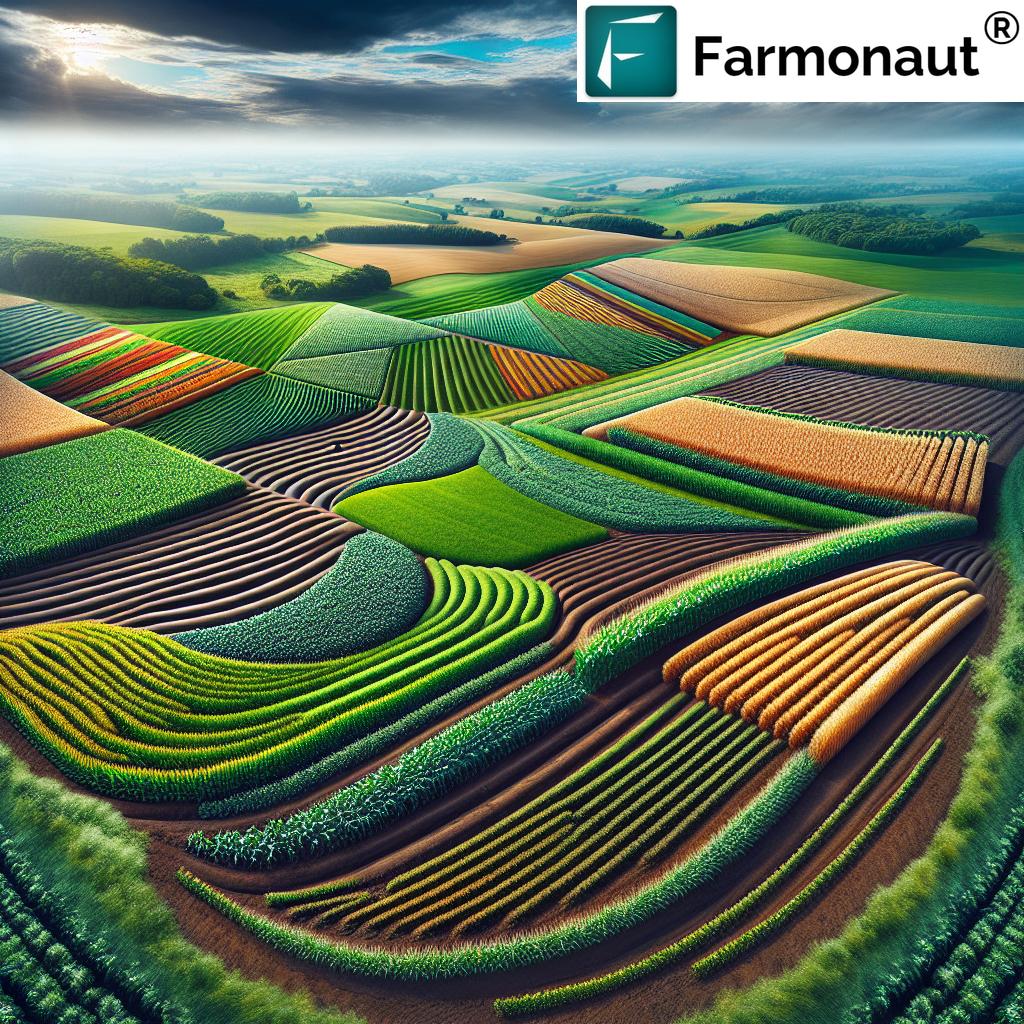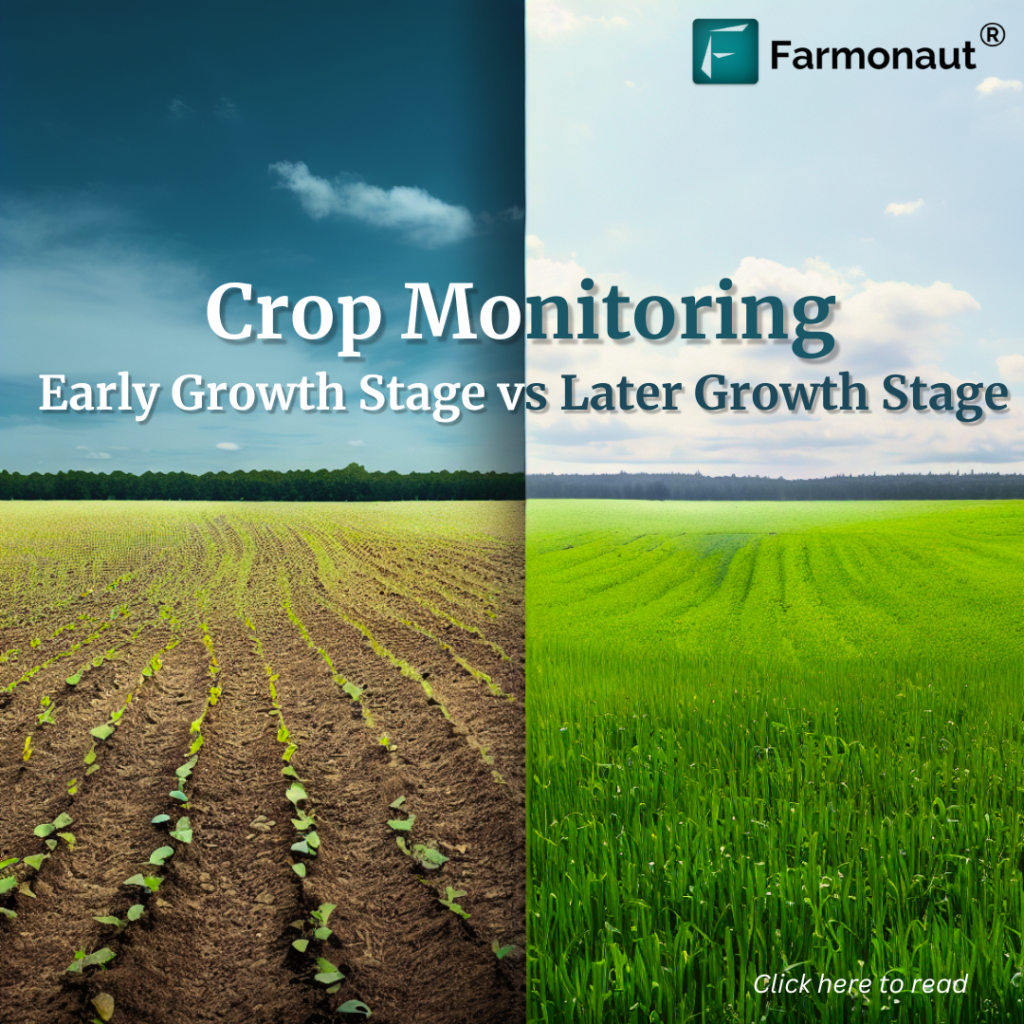Types of Agriculture: 7 Shocking Innovations Revealed!
Agriculture has always been the backbone of human civilizations, but today, it’s undergoing a rapid transformation. Diverse types of agriculture—empowered by sustainable farming practices, technological advancements, and bold innovations—are redefining how we cultivate crops and raise livestock. Join us as we explore the extraordinary journey of agricultural evolution, uncovering the methods, systems, and techniques shaping the future of food, fiber, and ecosystem stewardship.
Table of Contents
- Introduction: The Evolution of Agriculture
- Trivia: Water Usage in Agriculture
- Types of Agriculture: Exploration & Context
- 1. Subsistence Agriculture
- 2. Commercial Agriculture Systems
- 3. Seven Shocking Innovations in Agriculture
- 4. Specialized Agricultural Practices
- Farmonaut: Empowering the Future of Agriculture
- Frequently Asked Questions (FAQ)
- Conclusion
Introduction: The Evolution of Agriculture
Agriculture encompasses a wide array of practices and systems designed to cultivate plants and raise animals for food, fiber, medicinal uses, and other vital products. The diversity in agricultural methods reflects the adaptability and innovation of human societies in response to environmental conditions, cultural preferences, and technological advancements. As we navigate an era defined by changing climates, urbanization, sustainability imperatives, and booming populations, understanding the types of agriculture—and the profound innovations within—is essential to feeding and sustaining our world.
In this comprehensive guide, we analyze the most significant types of agriculture, highlight key sustainable farming practices, and reveal seven shocking innovations that are revolutionizing global food production. We’ll explore historical roots, present implications, and the technological future transforming how we grow, manage, and protect our agricultural resources.
Types of Agriculture: Context, Definitions & Diversity
The term “agriculture” spans a broad spectrum, from ancient, ecologically driven practices to modern, technology-heavy systems that use advanced data analytics and automation. The main types of agriculture can be divided by their scale (subsistence vs. commercial), intended outcomes (food, fiber, bioenergy, ecosystem services), production methods (monoculture or polyculture), and the integration of animals and plants (mixed systems).
- Subsistence Agriculture – Focused on self-sufficiency and smallholder farming.
- Commercial Agriculture Systems – Oriented around market production and profit.
- Sustainable, Alternative, and Technological Innovations
- Specialized Practices – Like aquaculture and horticulture.
In the next sections, we’ll explore each type in depth, followed by a deep dive into the shocking innovations changing the face of agriculture.
1. Subsistence Agriculture: Feeding Families and Preserving Land
Subsistence agriculture is one of the oldest and most resilient types of agriculture. In this system, our main goal is not profit, but survival—growing what we and our families need, often using labor-intensive and traditional methods. Characterized by small landholdings (typically under 2 hectares or 5 acres), this approach remains prevalent in rural areas of many developing nations.
Key Characteristics of Subsistence Agriculture
- Focus on self-sufficiency: food grown is mostly consumed by the household
- Minimal use of advanced technology or machinery
- Labor-intensive operations, relying on family labor
- Limited use of chemical inputs
- Low yields and often little to no surplus for trade
Shocking Innovation #1: Modern Data Tools to Empower Smallholder Farmers
Today, even small-scale, subsistence farmers can harness Farmonaut’s satellite-driven apps and real-time crop health monitoring to improve yields, track soil fertility, and sustainably manage precious resources—democratizing access to precision technology worldwide.
- Shifting Cultivation:
Also called “slash-and-burn”, this method involves clearing and cultivating a patch of forest, using the land until productivity declines, then moving on to a new patch. Sustainable at low density but can threaten ecosystems if overused. - Intensive Subsistence Farming:
Utilizes small plots, intensive labor, and often supports growing more than one crop annually (e.g. rice terraces in Asia). High population pressure means every inch of land is carefully managed.
Soil, Water & Resource Management: The Modern Approach
By integrating digital inputs—such as Farmonaut’s crop, plantation, and forest advisory tools—subsistence systems are now seeing improvements in soil health, irrigation efficiency, and pest management. Notably, farm-level monitoring via satellite images empowers even the smallest farmers to address challenges with actionable data, making sustainable food production possible at every scale.
2. Commercial Agriculture Systems: Feeding the Market
Commercial agriculture systems aim for large-scale production and profit. Monocultures are typical—vast stretches dedicated to specific crops like wheat, corn, or soybeans. This approach relies on modern technology, machinery, and significant chemical inputs such as synthetic fertilizers and pesticides to maximize yields.
-
Industrial Agriculture:
High-intensity systems driven by agribusiness logic, GMO seed varieties, and heavy investments in fertilizers, irrigation, and advanced machinery. -
Plantation Agriculture:
Large estates cultivate “cash crops” like tea, coffee, rubber, and palm oil. Historically tied to colonial economies, many “modern plantations” now use advanced traceability solutions such as Farmonaut’s blockchain-based traceability for supply chain transparency and compliance.
Shocking Innovation #2: Traceability and Transparency
Consumers are demanding ethically sourced products. Farmonaut’s blockchain-enabled traceability systems allow end-to-end tracking of agricultural products—from soil to shelf. This approach not only boosts consumer trust but also helps agribusinesses prove sustainable and responsible practices to international markets.
Farm Automation, Fleet, and Large-Scale Management
Modern commercial agriculture systems depend increasingly on automated machinery and logistics. Tools like Farmonaut’s fleet management and large-scale farm management app empower agribusinesses to coordinate vehicles, fields, and resources—cutting operational costs while maximizing harvest efficiency and safety.
3. Seven Shocking Innovations in Agriculture: Leading the Future
As global challenges intensify—from climate volatility and water scarcity to demands for sustainability—we’re now witnessing extraordinary leaps in agricultural practices. Let’s uncover the seven most impactful innovations shaping the next era of food systems:
Sustainable Farming Practices & Alternative Systems
-
Organic Farming Methods
Organic agriculture eschews synthetic pesticides, chemical fertilizers, and GMOs. Instead, it relies on compost, natural pest controls, and rotational crops that build soil health and biodiversity.Benefits: Higher ecosystem health, improved food safety, premium market positioning.
Innovation: Satellite-based monitoring and AI advisories—like Farmonaut’s Jeevn AI Advisory System—streamline organic management and ensure compliance. -
Agroforestry Benefits & Integrated Systems
Agroforestry integrates trees and shrubs into agricultural systems for enhanced soil protection, biodiversity, and microclimate regulation.- Silvopasture: Combining grazing livestock with tree cover for mutual benefit.
- Forest farming: Growing medicinal plants, mushrooms, or other crops under a forest canopy.
Benefit: Long-term soil fertility, resource conservation, and carbon sequestration.
-
Conservation Agriculture Practices
This approach prioritizes minimal soil disturbance (eg. no-till), permanent soil cover, and intelligent crop rotations.- Reduces erosion
- Improves soil moisture retention
- Encourages biodiversity both above and below ground
Tool: Remote sensing (NDVI, soil moisture) allows for real-time tracking and improvement of conservation outcomes.
-
Regenerative Agriculture: Healing Landscapes
An evolution of conservation, regenerative agriculture works to restore soil carbon, reverse degradation, and rebuild ecosystem balance. Practices include holistic grazing, composting, and use of biochar to sequester carbon in the soil.
Farmonaut’s carbon footprinting platform enables farm-by-farm environmental impact assessment, accelerating true regeneration. -
Controlled-Environment Agriculture (CEA): Hydroponics, Aeroponics, and More
CEA involves cultivating crops in regulated spaces—like greenhouses or indoor “vertical” farms—using soilless methods like hydroponics (nutrient-rich water) and aeroponics (nutrient mist).- Enables year-round production regardless of weather
- Reduces resource consumption: up to 90% less water use
- Eliminates need for soil and minimizes pesticide reliance
-
Vertical Farming Techniques: The Urban Revolution
Vertical farming stacks crops in multi-level layers, perfect for urban settings or arid regions with little land. LED lighting, total climate control, and recirculated nutrients achieve high-density production and reduce transportation.- Yield gains: Vertical farms may deliver 10x harvests per acre compared to field farming.
-
Precision Agriculture Technology: Data-Driven Decisions
By integrating GPS, sensors, and AI with crop management, precision agriculture allows us to:- Deliver targeted irrigation, fertilization, and pest control
- Reduce waste and environmental impact
- Boost yields while optimizing inputs
Access: Farmonaut’s Android, iOS, Web App, and API solutions make these precision tools accessible even to smallholders.
Comparative Innovation Table: Traditional vs. Innovative Types of Agriculture
| Agriculture Type | Core Methods / Technologies | Estimated Yield Increase (%) | Sustainability Impact | Environmental Benefit | Adoption Rate (%) | Notable Example (Country/Project) |
|---|---|---|---|---|---|---|
| Traditional (Subsistence) | Manual, mixed-cropping, local seeds, minimal inputs | Base level | Medium | Low external input, but may degrade land if overused | ~25% | Rural South Asia, Africa, Latin America |
| Industrial | Monoculture, chemical fertilizers, high mechanization | 30–50% | Low | High yields, but soil/ water/ biodiversity loss | ~60% | USA, Brazil, China Wheat Belts |
| Organic | No synthetic chemicals, crop rotations, compost, natural pest control | 10–30% | High | Builds soil/ biodiversity, safer food | ~8–10% | EU, India, Australia |
| Agroforestry | Trees combined with crops/ livestock | 20–40% | High | Reduces erosion, sequesters carbon | ~12% | Brazil, Kenya, Indonesia |
| Conservation Agriculture | No-till, cover crops, crop rotation | 25–35% | High | Boosts water/ soil quality, biodiversity | ~16% | Argentina, US Corn Belt |
| Regenerative | Holistic grazing, compost, biochar integration | 20–45% | High | Restores degraded land, carbon capture | ~5–8% | Australia, North America ranchlands |
| Vertical Farming | Stacked layers, LED, hydroponics, climate control | 100–900% | High | Huge water/land savings, urban sustainable food | ~2–4% | Singapore, Japan, USA Urban Farms |
| Precision Agriculture | GPS, satellite imaging, sensors, AI, data analytics | 10–45% | High | Optimal input use, minimum environmental impact | ~20% | EU, US, India (via Farmonaut) |
*Adoption rates are global estimates; impacts can vary by region, ecosystem, and farm type.
Try Farmonaut’s Agriculture API (Developer Docs).
Exclusive Subscription Plans: Start Your Precision Agriculture Journey
4. Specialized Agricultural Practices: Meeting Diverse Needs
Beyond the major types of agriculture, diverse specialized practices enable us to adapt to unique ecological, cultural, and market conditions. These methods play critical roles in global food security, innovation, and resource efficiency.
-
Aquaculture:
Cultivating aquatic organisms—fish, shellfish, algae—in controlled freshwater or marine environments. Aquaculture streamlines seafood production and supports nutrition in regions with limited arable land. -
Silviculture:
Managing forests to optimize timber, non-timber forest products, biodiversity, or recreational uses. -
Horticulture:
Producing fruits, vegetables, nuts, seeds, herbs, mushrooms, and ornamental plants—contributing dietary diversity, health, and landscape beautification.
Each of these sectors increasingly integrates precision agriculture technology, satellite crop monitoring, and digital resource management to optimize outcomes and sustainability.
Are you managing plantations or large-scale farming operations? Explore Farmonaut’s Large Scale Farm Management Apps to coordinate workers, assets, fields, and more with real-time satellite insights!
Need financial risk management? Read about Farmonaut’s remote-sensing crop loan & insurance verification system, which provides banks and insurers with rapid, fraud-proof proof of agricultural activity—improving farmer access to capital.
Frequently Asked Questions (FAQ): Types of Agriculture & Innovations
The main types of agriculture include subsistence agriculture (mainly for self-consumption), commercial agriculture (market-driven, profit-focused), and a spectrum of sustainable, alternative systems like organic, agroforestry, conservation, regenerative, vertical farming, and precision agriculture.
Q2. What is sustainable agriculture, and why does it matter?
Sustainable agriculture refers to practices that preserve resources, enhance soil health, and minimize negative environmental impacts. It matters because it ensures ongoing productivity while protecting water, biodiversity, and climate resilience for future generations.
Q3. How does precision agriculture improve yields?
Precision agriculture technology uses GPS, sensors, satellite imagery, and AI to deliver the right input at the right place and time. This optimizes resource use (water, fertilizers, etc.), reduces waste, boosts yields, and enhances sustainability.
Q4. How do I start using Farmonaut’s technology?
Download the Farmonaut app (available on Android, iOS, and Web) to access crop health monitoring, AI advisory, fleet tracking, and more. Visit the product page for details on large-scale management solutions.
Q5. What are the key environmental benefits of alternative agricultural practices?
Alternative methods like organic, agroforestry, conservation, and vertical farming reduce soil erosion, save water, boost biodiversity, cut chemical use, and sequester carbon—supporting planet and people simultaneously.
Q6. Is vertical farming financially viable?
Vertical farming can offer much higher yields per acre and significant water/land savings, but initial investment and energy costs are currently high. Success increases as technology improves and urban demand for fresh, local food grows.
Q7. Can I track carbon emissions on my farm?
Yes! Farmonaut’s carbon footprinting solution lets you analyze, monitor, and report emissions—empowering you to take steps towards environmental compliance and sustainability leadership.
Conclusion: Towards Resilient, Sustainable, and Integrated Agriculture
Humanity’s journey in agriculture is defined by adaptability, diversity, and a relentless drive for innovation. From subsistence plots feeding families to bold, skyscraper-style vertical farming and data-driven precision agriculture, our world of food production is richer, smarter, and greener than ever.
By embracing new methods, leveraging information technology (like Farmonaut’s satellite-based solutions), and committing to sustainable farming practices, we not only feed the world—we safeguard the planet for generations to come.
Let’s shape the future of agriculture together.


